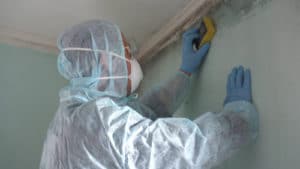02 Jan. 19
How To Detect Mold In Your House

Smell
The smell test is one of the easiest tests you will ever come across. If you know how mold smells like from a previous experience, then you are better placed to detect the presence of mold by giving it an old sniff test. If you do not have the slightest idea of how mold smells like, it is better described as an odd, stale stench that you could connect to a musty and dumpy source. Mold smell in undeniably too bold to ignore.
Distinguishable growth
The mold may manifest in the form of dirty spots visible to the naked eye. If you see some mold on the floor, walls, or cabinets, it is advisable to dig deeper to reveal the unseen mold and determine the source of it.
Respiratory Problems
Although not all mold cause health symptoms, there is a significant mass that is well known for affecting our respiratory system. The black mold, in particular, contains mycotoxins that attack the immune and respiratory systems causing infections. If your loved one is suffering from recurrent skin inflammation, coughs, irritated mucous membrane, and immune system issues even after medication, this may be a red flag. Since there is no apparent cure for the toxic molds, the only solution is to eradicate the mold in your home. You are likely to recover from the symptoms once the mold has been eliminated permanently.
Water Leaks
As mentioned earlier, moist conditions favor the growth of mold. When you detect water leaks in your home, you should call professionals to fix the damaged water systems. A leaking pipe or roof could be an indicator of possible mold growth beneath the covers. In most cases, leaks are not spotted immediately, and this gives mold time to settle and start reproducing. Before you begin to notice the leak, mold could be all over.
Events Of A Previous Flooding
If your house has previously experienced a flooding episode, there is a high chance that you will have to deal with the mold menace. Drying Tech recommends professional mold cleaning and remediation to ensure your house is in good condition after a flood.
The tests highlighted above are simple and straightforward. They make mold detection a do-it-yourself task for everybody. However, cleaning out the mold may require the intervention of experts. Professionals will not only help you eliminate the mold but also prevent reoccurrence.
